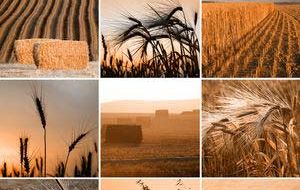MercoPress. South Atlantic News Agency
FAO forecasts higher harvest volumes but still insufficient
 Latest forecast for world cereal production in 2008 points to a record 2.192 m. tons
Latest forecast for world cereal production in 2008 points to a record 2.192 m. tons High food prices have particularly hit vulnerable populations in many countries that spend a substantial part of their income on food, according to a report released Thursday by the UN Food and Agriculture Organization (FAO) in Rome.
The latest Food Outlook indicates that the food import bill of the Low Income Food Deficit Countries (LIFDCs) is expected to reach 169 billion US dollars in 2008, 40% more than in 2007. FAO calls the sustained rise in imported food expenditures for vulnerable country groups "a worrying development" and says that by the end of 2008 their annual food import basket could cost four times as much as it did in 2000. International prices of most agricultural commodities have started to decline, but they are unlikely to return to the low price levels of previous years, Food Outlook reports. The FAO food price index has remained stable since February 2008, but the average of the first four months of 2008 is still 53% higher when compared to the same period a year ago. "Food is no longer the cheap commodity that it once was. Rising food prices are bound to worsen the already unacceptable level of food deprivation suffered by 854 million people" said FAO Assistant Director-General Hafez Ghanem. "We are facing the risk that the number of hungry will increase by many more millions of people." Despite a favorable global production outlook, the expected price decline in many basic agricultural commodities during the new 2008/2009 season is likely to be limited, because of the need to replenish stocks and an increase in utilization. Due to rising utilization, more than one good season is required to replenish stocks and reduce price volatility. FAO latest forecast for world cereal production in 2008 points to a record output, now at nearly 2.192 million tonnes, including milled rice, up 3.8% from 2007. Among major cereals, the tight wheat supply is likely to improve most, given the prospects for better harvests in 2008. Despite record production levels in several crops, tight markets will probably lead to continued price volatility during the season. FAO also addressed commodity highlights. Oils and oilseedsThe rise in international prices of oilseeds and oilseed products has accelerated in 2007/08, with values climbing to new record levels in March 2008. World markets have tightened considerably as reduced supply growth for oils and a drop in meal supplies are coinciding with further expansion in demand. First forecasts for the 2008/09 season point towards a strong recovery in global oilseed production, and the resulting oil and meal output should be sufficient to meet global demand. Sugar Generally favorable growing conditions led to a record world sugar production in 2007/08 and although world sugar consumption is foreseen to increase at a sustained rate, it will not be enough to absorb an expected second consecutive global supply surplus. International sugar prices are likely to remain under downward pressure. MeatGlobal meat output is expected to grow in 2008 despite high feed prices. Strong economic growth is expected to sustain steadfast consumption in many developing countries. DairyGlobal milk production, which is responding to the past year's high milk product prices, is forecast to grow strongly in 2008. However, there is uncertainty as to where dairy markets will head. Global trade in milk products is anticipated to fall again in 2008 mainly because of reduced exportable supplies. Import demand seems to have faltered because of high dairy product prices due to strong increases in milk output among several importing countries. FisheriesFood Outlook forecasts that aquaculture production growth will continue this year with the historic milestone of reaching the same level as the expected capture fisheries in 2008. Prices for wild species from capture fisheries are moving upwards strongly but the price increase for farmed species are expected to be more moderate. The potato World wide potato production could expand over the next decade between 2 and 3% annually – with developing countries, especially those situated in Sub Saharan Africa, being the main engine of growth. In China, the world's biggest potato producer, authorities are reviewing proposals for the potato to become one of the country's major food crops, while India is considering plans to double potato output in the next five to ten years.
![“Working directly with President [Donald] Trump and Congress, we accomplished what no one else could,” Patel stressed](/data/cache/noticias/108417/130x80/fbi.jpg)



Top Comments
Disclaimer & comment rulesCommenting for this story is now closed.
If you have a Facebook account, become a fan and comment on our Facebook Page!